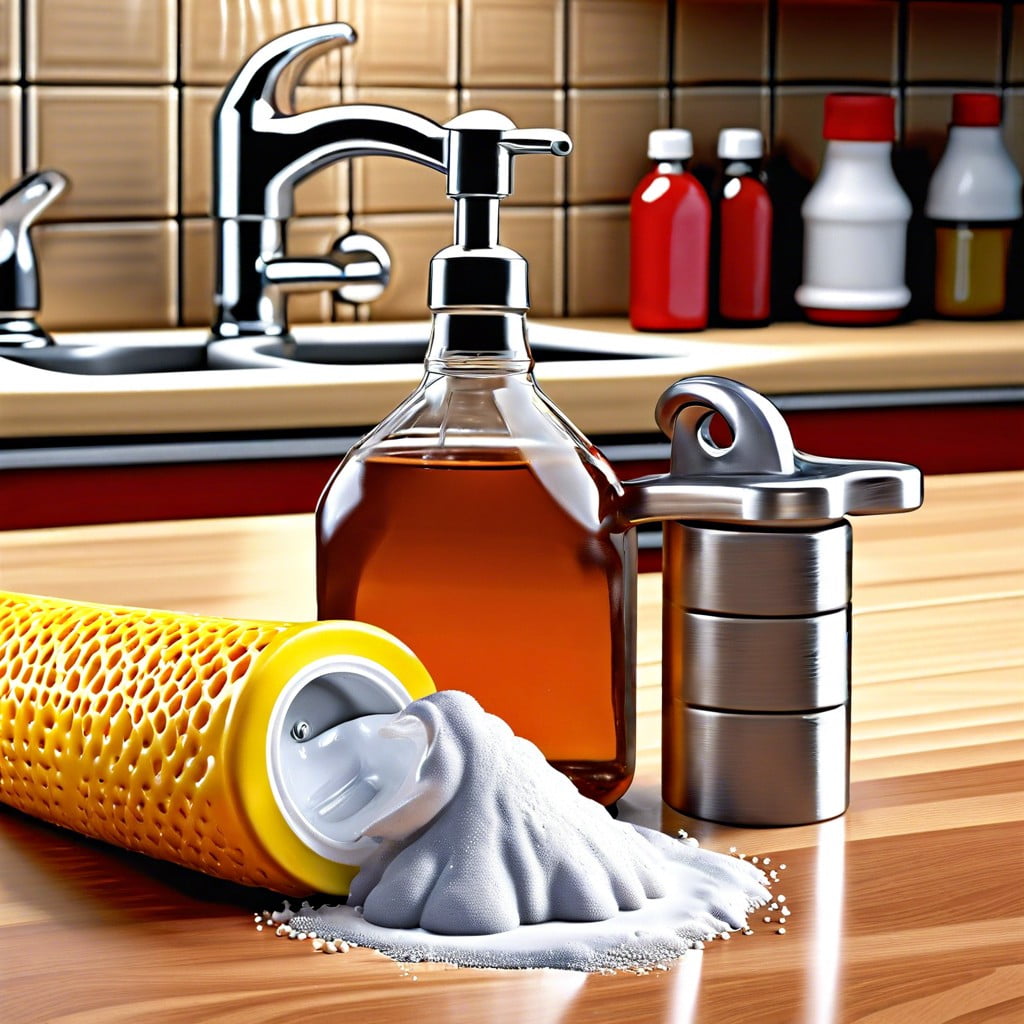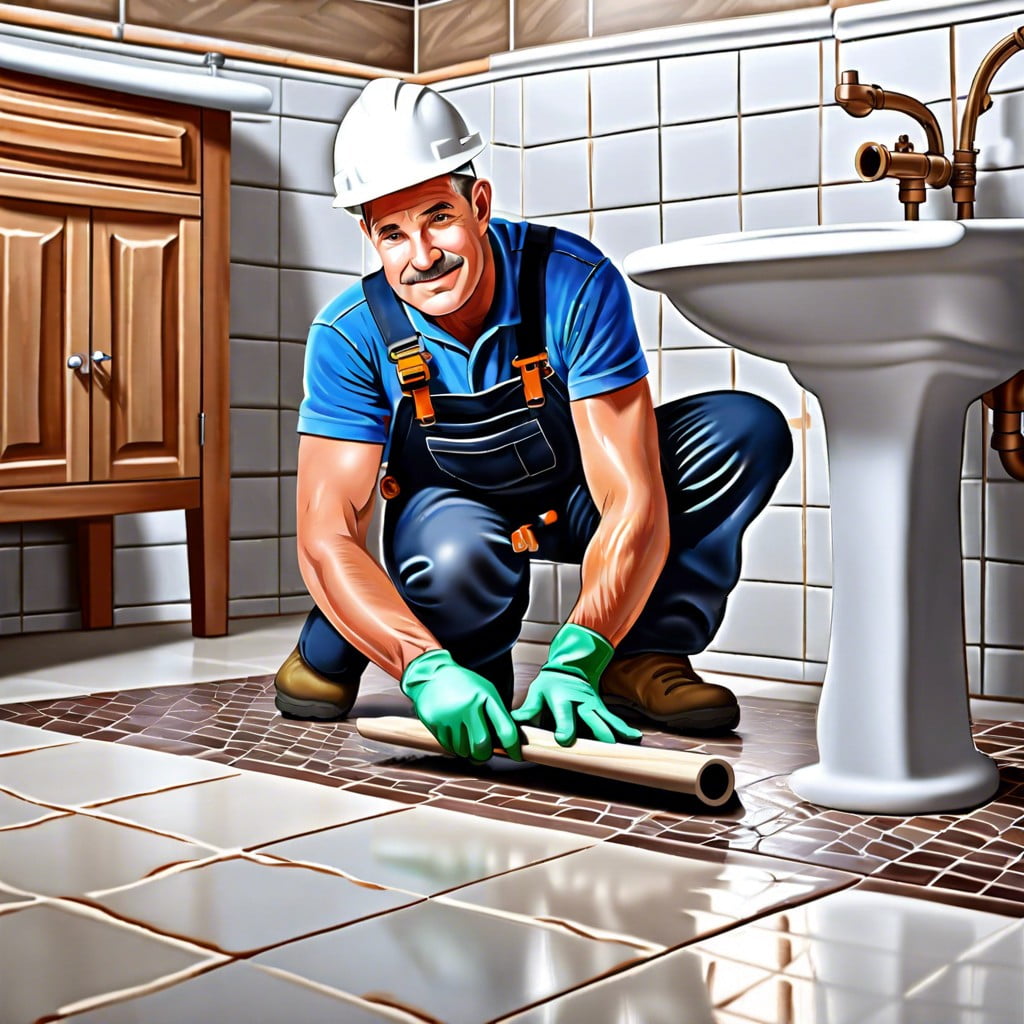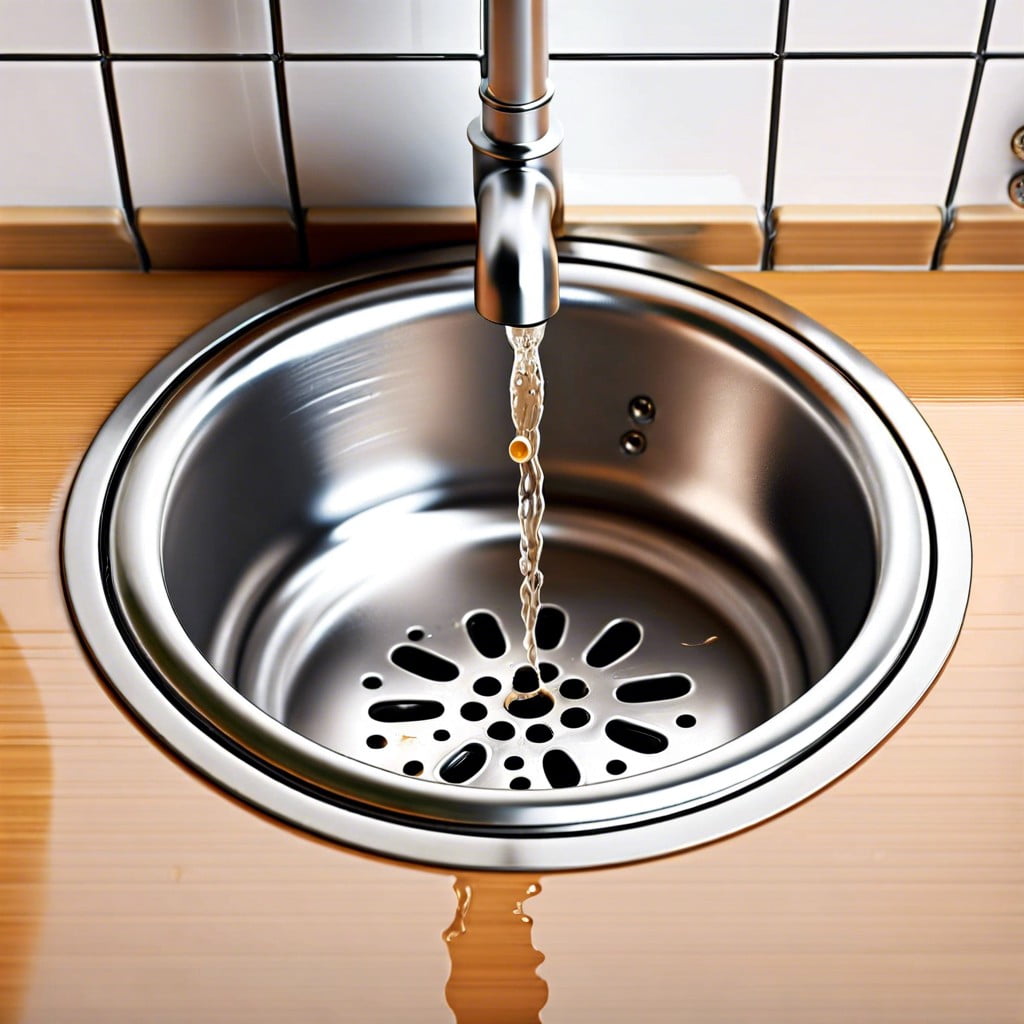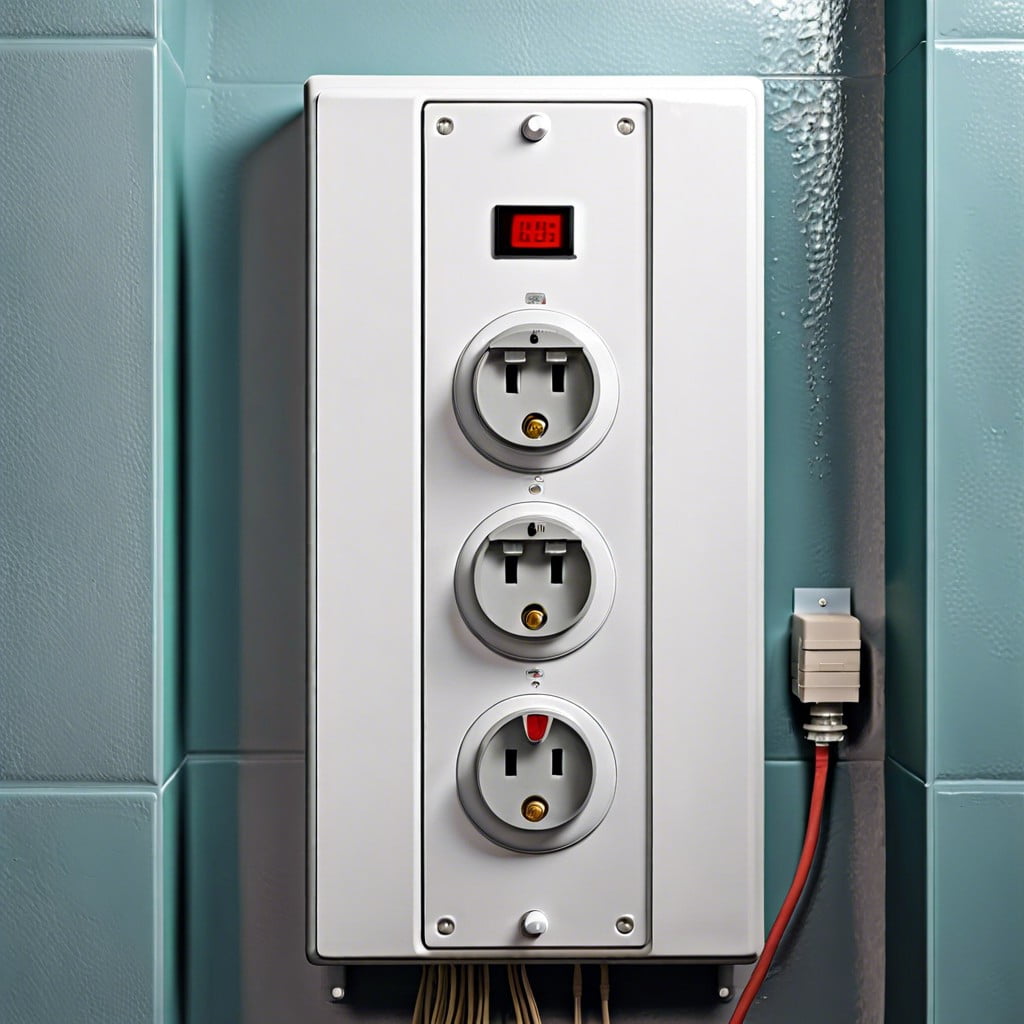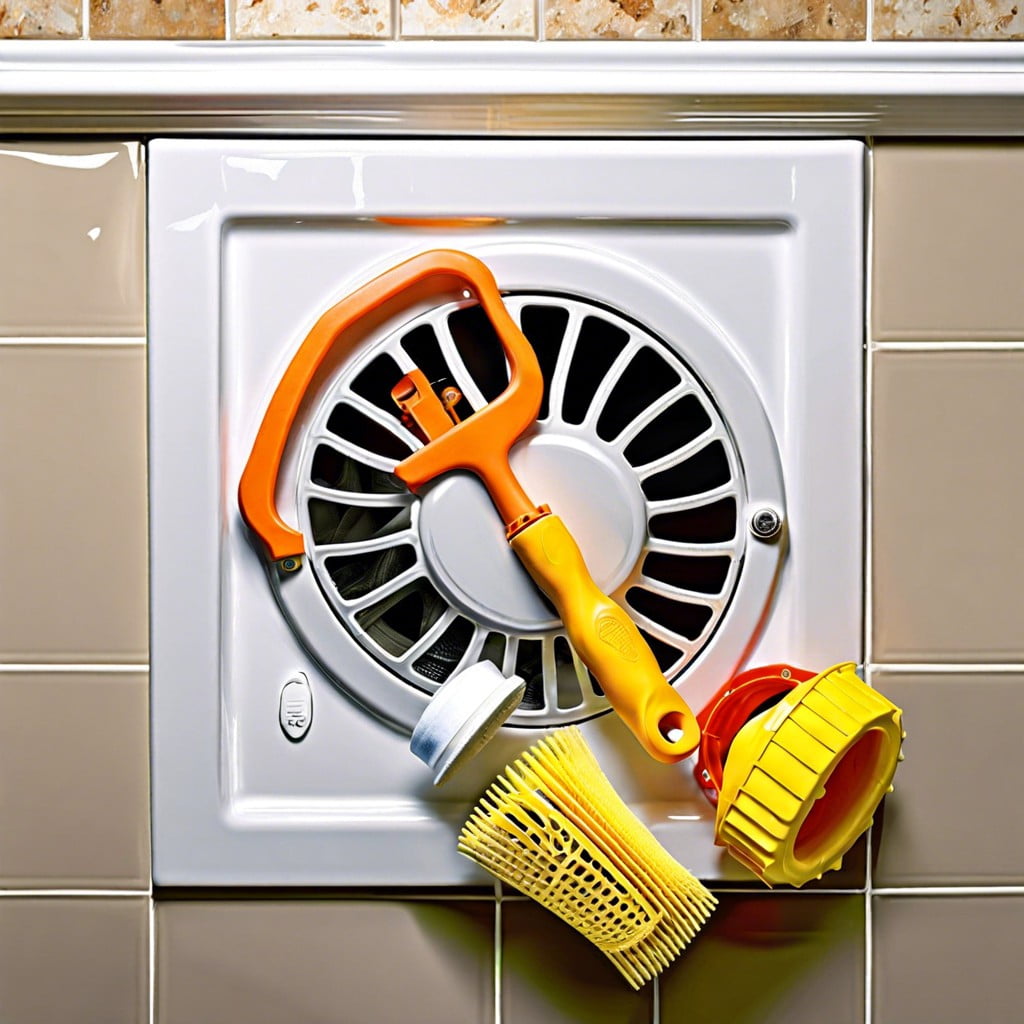Last updated on
This article will guide you through the efficient method to clean your bathroom fan, ensuring that it runs smoothly and extends its lifespan.
Key takeaways:
- Turn off the electrical breaker before cleaning.
- Remove the exterior fan cover with caution and clean it.
- Clean the motor housing and blades using different methods.
- Replace the fan components carefully to avoid damage.
- Turn on the fan and test its operation after cleaning.
Turn Off the Electrical Breaker
Safety should always be your first step. Cutting off power is crucial before any cleaning commences to prevent electrical accidents.
Locate your home’s electrical panel and flip the switch corresponding to the bathroom to ensure a safe cleaning process.
Use a non-contact voltage tester afterward to double-check that there’s no current flowing to the fan.
Now, with the electricity safely disabled, you can proceed with confidence, knowing you’ve eliminated the risk of shock.
Remove the Exterior Fan Cover
To remove the cover with ease, first locate any screws or fasteners that are holding it in place. If screws are present, a screwdriver will usually suffice for this task. In the case of a cover that snaps on, apply gentle pressure to release the clips or tabs from the fan housing – patience is key here to avoid breaking these components.
Once the fasteners or screws have been dealt with, lower the cover carefully. If the cover doesn’t come off easily after the screws are removed, it might be held in place by a layer of paint. In this scenario, a utility knife can be employed to slice through the paint seal. Be mindful to support the cover during this process to prevent it from falling after it becomes free.
Dust and grime accumulations are common and they may even cause the cover to stick. If so, a mild tap or wiggle may be required, but remember to do so with care to avoid damaging the cover or the fan blades within. With the cover in your hands, take the opportunity to thoroughly wash it with soapy water, but set it aside to dry completely before reinstalling.
Clean the Motor Housing and Blades
With the cover set aside, direct your attention to the dust and debris that has settled within the fan’s motor housing and on the blades. For a thorough cleanse:
1. Static Cling: Utilize a vacuum with a brush attachment to gently suction away loose particles, preventing them from scattering or falling onto surfaces below.
2. Precision Dusting: To dislodge stubborn grime, employ a small paintbrush or a toothbrush for intricate areas, ensuring a meticulous sweep without causing damage.
3. Wipe Wisdom: Dampen a microfiber cloth with water and mild soap, squeezing out excess moisture, to wipe down surfaces. It’s imperative to avoid saturation, as moisture can harm the motor.
4. Blade Balance: Ensure each blade is cleaned equally to maintain balance and function. Uneven cleaning can lead to wobbling or increased wear on the fan.
5. Dryness Directive: After washing, take a dry cloth to remove any lingering dampness. Conduct this with care, keeping in mind that the goal is protecting the motor’s integrity.
By following these focal points, the motor housing and blades will be free of dirt, potentially enhancing performance and extending the lifespan of your bathroom fan.
Replace the Fan Components
When it’s time to put everything back together, ensure that all components are completely dry. Any moisture left can damage the fan motor or lead to mold and mildew buildup.
Line up the fan blades correctly to avoid any imbalance which can cause noisy operation or wear out the motor quickly. For the cover, press it firmly back into place and secure it using any clips or screws.
Double-check that the cover is flush against the ceiling to prevent dust from getting back into the fan housing too soon. Remember, proper reassembly is critical not only for function but also to maintain the fan’s longevity.
Turn On the Fan
After ensuring all components are secure and the cover is in place, it’s finally time to restore power. Head back to the electrical panel and switch on the breaker that corresponds to the bathroom fan. With caution, flip the fan switch to test its operation.
Listen for any unusual sounds that might indicate a problem. If the fan runs smoothly and quietly, your work here is done, and you’ve successfully cleaned and maintained an essential part of your bathroom’s ventilation system.
Regular cleaning helps extend the fan’s lifespan and increases its efficiency in preventing mold and mildew buildup, crucial in high-moisture areas.
FAQ
Do bathroom fans need to be cleaned?
Absolutely, bathroom fans need to be cleaned at least annually to ensure that they function optimally and contribute effectively to maintaining indoor air quality.
How do you clean a bathroom extractor fan without removing it?
Cleaning a bathroom extractor fan without removal can be achieved by lightly using a vacuum with a crevice tool, a damp cloth, or even an electrostatic duster to extract the dust.
What are the signs that your bathroom fan requires a thorough cleaning?
Signs that your bathroom fan requires a thorough cleaning include decreased performance, louder noise during operation, and visible dust or grime buildup on the fan blades or vent cover.
What tools would be necessary for a comprehensive cleaning of a bathroom ventilation system?
To comprehensively clean a bathroom ventilation system, a vacuum cleaner with hose attachment, bristle brush, protective gloves, safety glasses, screwdriver, and soap solution would be required.
Can routine cleaning of bathroom fans improve their efficiency and lifespan?
Yes, routine cleaning of bathroom fans can enhance their efficiency and extend their lifespan.
Recap
